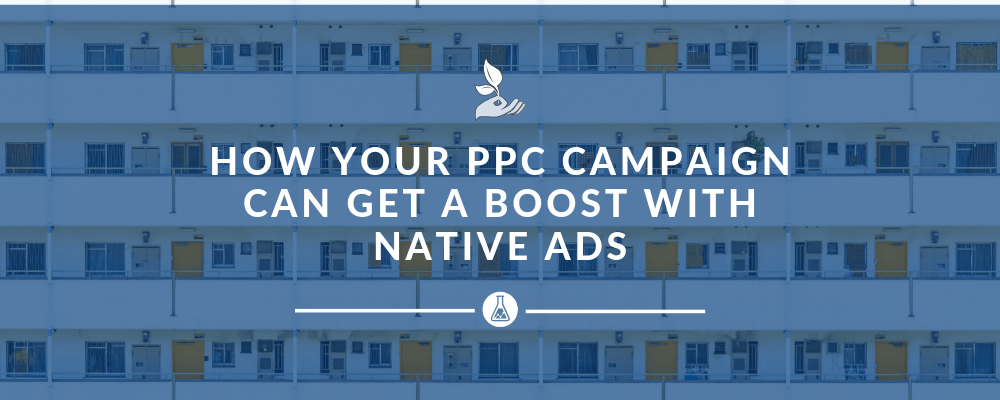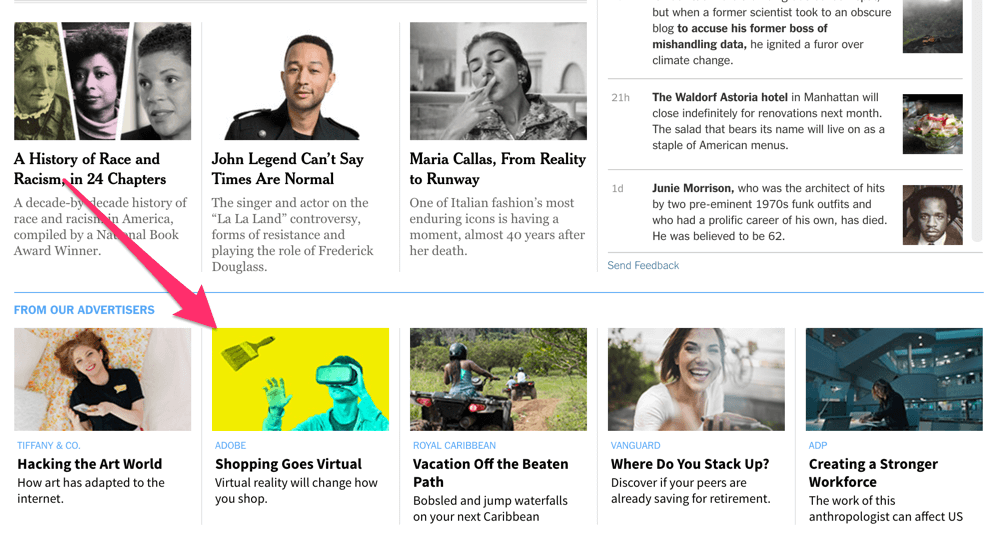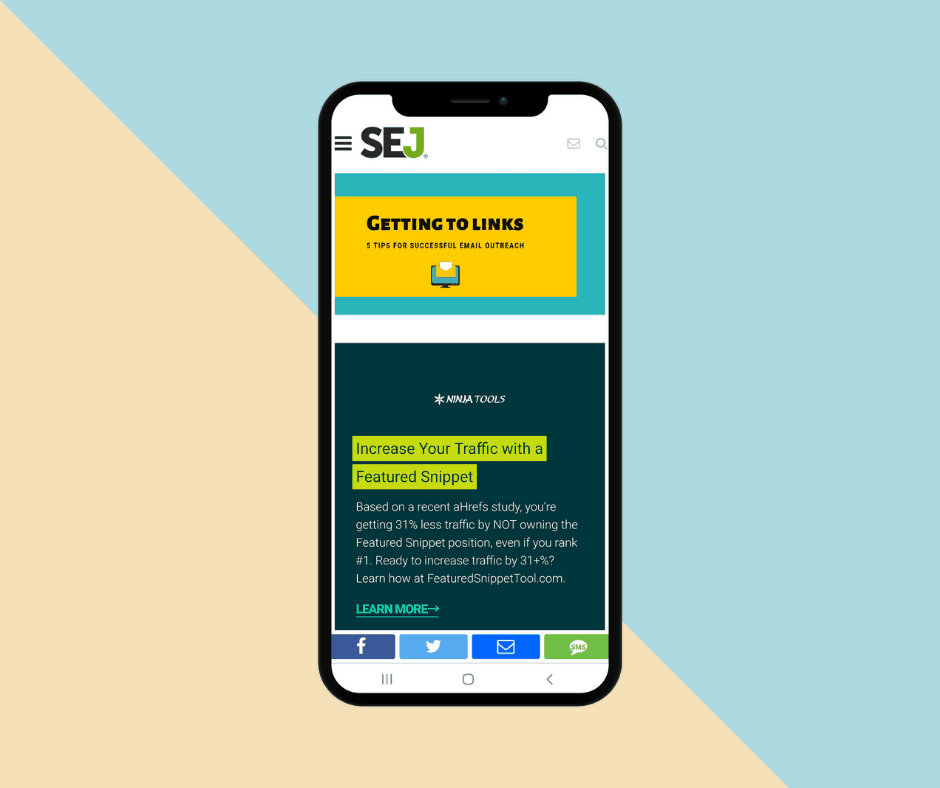PPC is a staple of the digital marketing world for a very good reason. It’s a relentless performer, affordable, rapidly scalable, and perfect for optimization (manual and automated). Even in the hands of beginners, it’s useful — and in the hands of experts, it gathers ROI like nothing else, particularly in the hyper-lucrative ecommerce world.
But PPC isn’t best in isolation. It peaks when used in combination with other marketing tactics that can complement it, such as native ads. Native advertising involves running advertising copy alongside organic content, having designed it to fit the context thematically and stylistically. If you’ve ever seen a piece with a “Sponsored Content” tag, you’ve seen a native ad.
To achieve a more well-rounded marketing campaign, then, you might want to consider pairing a comprehensive PPC effort with a foray into the ever-growing world of native advertising. But how exactly can you use this tactic? Let’s take a closer look at the prospect:
The rise of native advertising. What is it?
Finding ways to monetize online content has long been a struggle, and when classic banner ads started to lose their potency, webmasters looked for alternative ways to raise revenue. At the same time, advertisers were searching for better ways to get their promotional content seen — PPC is very effective, but it has format limitations, so it isn’t ideal for long-form copy.
Thus came about the notion of native advertising, with webmasters agreeing to feature promotional content in the midst of their regular content. The promotional content would still need to offer significant value for the reader (being entertaining and/or informative) in order to avoid a backlash. Done well, a native piece would add to the site and benefit all parties, like this ad from Adobe on the New York Times’ website.
Of course, the early days had some major issues: most notably, that of disclosure and clarity. Soon enough, webmasters had to be much more strict about identifying native advertising content — this is why “Sponsored content” and “Sponsored post” tags are so common now. With those restrictions in place, native ads have spread across every type of content platform, powered in many cases by services like Outbrain or Shareaholic.
Native ads similarities to PPC
Native advertising and PPC advertising are similar in a very important way: each one ideally features clearly-marked promotional chunks that succeed despite that marking. The goal for an ad isn’t to be subtle and grab attention while someone’s distracted: it’s to be sufficiently worthy of attention that someone will gravitate towards it regardless of it clearly being promotional.
This is one of the reasons why these two marketing tactics are so compatible. Seasoned PPC experts know all about catching the eye in the middle of a lot of competition, and having the opportunity to work on lengthier pieces lets them put those skills to good use. Perhaps even making a piece of native advertising more engaging than the organic content around it.
One of the core goals of any brand with a major online presence must be to establish a brand voice that people will remember. That means having a clear set of values, a consistent tone, and a style that shines through (no matter the format). A native ad used as an extension to a PPC campaign should take the basic elements and run with them, expanding on them to provide more insight into the company and what it’s trying to promote.
NATIVE vs. PPC - Priming action, then offering it
The best way to look at a combined strategy of PPC and native advertising is that native advertising is all about priming relevant people to act. If you think of the typical sales funnel, the native advertising is great for people in the very earliest stages: people who may not really know anything about what you’re selling, or might not know why they’d want it. The creative freedom of the article format lets you entertain someone while also seeding your product in their mind.
PPC, meanwhile, is better for the later stages: for finding people ready to take action and giving them the opportunity to do so. When someone searches for your product, or for that type of product, your ad can be there to take advantage of that interest — to turn a qualified lead into a valuable conversion. Because of this, the two make a powerful combination.
Can you use native advertising to directly push conversions? Sure, that’s doable, particularly through a platform like Outbrain, though you’ll need to track the results carefully for it to be worth it. In general, though, I’d say it’s better to use your native ads to set up the leads that you then convert through your PPC ads. It’s a better fit of the format strengths and will make conversion tracking significantly easier (you’ll already have PPC tracking configured, after all).
What can go wrong with native ads
Native advertising sounds great — much of the impact of organic content marketing, but so much easier to control in a PPC-style way — but it also has its downsides. Most notably, you must remember how easily people become cynical about the content they read, especially given how much clickbait and low-quality native advertising gets around these days.
If you don’t make an effort to fit your native ads into their planned environments, or go overboard in being blatantly promotional, you’ll generate a lot of antipathy towards your brand (and towards the people hosting it, which will make them much less likely to want to host your content in the future unless you can make a much bigger financial offer).
In addition, you must be careful about the native advertising services you use or the webmasters you work with (depending on whether you use automation or manual outreach to negotiate native ad placements). Just as bad content can make a hosting site look worse, posting great content on a mediocre site can significantly reduce its impact.
Overall, native advertising makes for a natural extension to a PPC campaign. Each one can cover the other’s weaknesses, with native advertising having the space to comprehensively introduce a brand or product, and a strong PPC ad being optimized to appear in the right place at the right time.

Kayleigh Alexandra
Writer and small business owner, Kayleigh is an expert in all things content, freelance, marketing, and commercial strategy.
She's a featured expert of Micro Startups, the online destination for everything startup, dedicated to spreading the word about hard-working solopreneurs and SMEs making waves in the business world. You can find them on Twitter @getmicrostarted.




